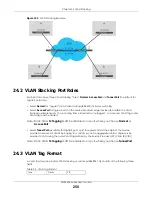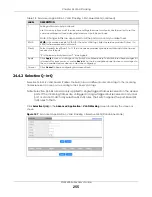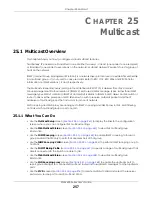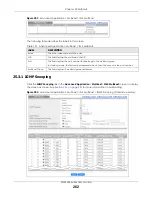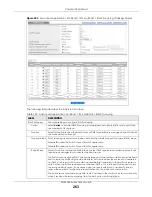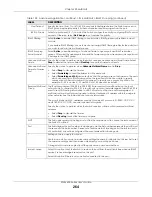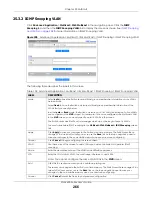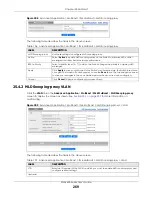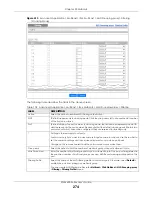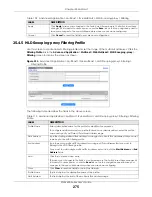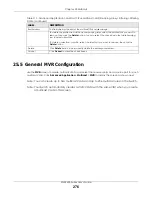
Chapter 25 Multicast
XGS4600 Series User’s Guide
261
When the subscriber selects a television channel, computer
A
sends an IGMP report to the Switch to join
the appropriate multicast group. If the IGMP report matches one of the configured MVR multicast group
addresses on the Switch, an entry is created in the forwarding table on the Switch. This maps the
subscriber VLAN to the list of forwarding destinations for the specified multicast traffic.
When the subscriber changes the channel or turns off the computer, an IGMP leave message is sent to
the Switch
to leave the multicast group. The Switch sends a query to VLAN 1 on the receiver port (in this
case, an uplink port on the Switch). If there is another subscriber device connected to this port in the
same subscriber VLAN, the receiving port will still be on the list of forwarding destination for the multicast
traffic. Otherwise, the Switch removes the receiver port from the forwarding table.
Figure 200
MVR Multicast Television Example
25.2 Multicast Setup
Use this screen to configure IGMP for IPv4. Click
Advanced Application
>
Multicast
in the navigation
panel.
Figure 201
Advanced Application > Multicast Setup
The following table describes the labels in this screen.
25.3 IPv4 Multicast Status
Click
Advanced Application
>
Multicast
>
IPv4 Multicast
to display the screen as shown. This screen
shows the IPv4 multicast group information. See
for more information on
multicasting.
Table 100 Advanced Application > Multicast Setup
LABEL
DESCRIPTION
IPv4 Multicast
Click the link to open screens where you can configure IGMP snooping and IGMP filtering for
IPv4.
IPv6 Multicast
Click the link to open screens where you can configure MLD snooping-proxy and MLD filtering
for IPv6.
MVR
Click the link to open screens where you can create multicast VLANs.




